Your budget laptop overheats during gaming because manufacturers cut costs on essential cooling components. You’re dealing with fewer heat pipes, smaller fans, and inadequate airflow that can’t handle demanding games. Cheap thermal paste degrades quickly, while underpowered CPUs and GPUs generate excessive heat when pushed beyond their limits. Single fan configurations create bottlenecks, and integrated graphics force your CPU to handle both processing and rendering simultaneously. Understanding these specific design flaws will help you make better decisions.
Inferior Cooling Systems in Budget Gaming Laptops
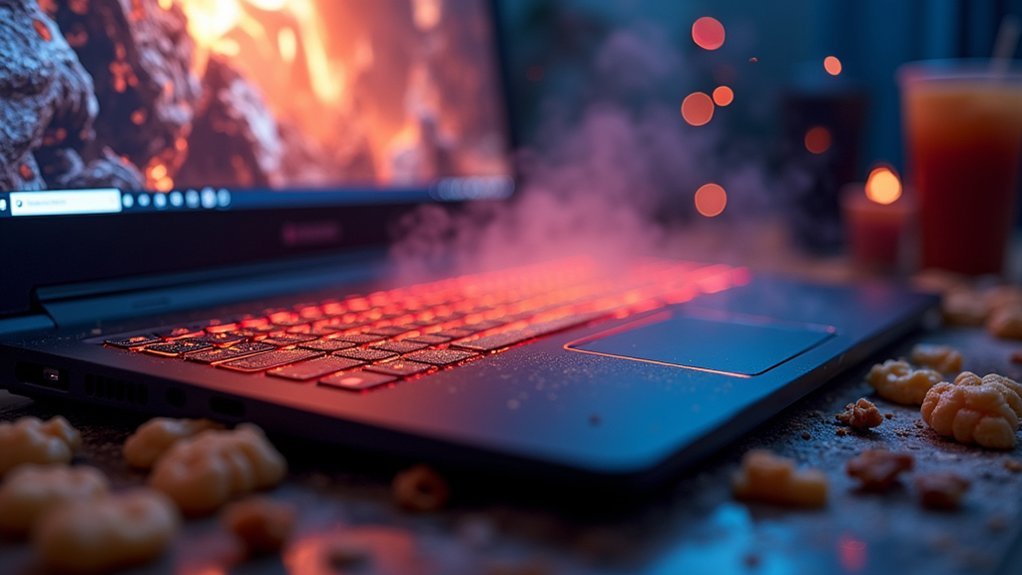
When you’re shopping for a budget gaming laptop, you’ll quickly discover that manufacturers cut corners on cooling systems to keep prices low. These inferior cooling systems typically feature fewer heat pipes and smaller fans, creating inadequate airflow that can’t handle demanding applications effectively.
Budget gaming laptops sacrifice cooling performance through fewer heat pipes and smaller fans to maintain competitive pricing.
Your laptop’s compact design further restricts space for proper ventilation, causing internal temperatures to spike during intensive gaming sessions.
Cost-cutting measures extend beyond hardware limitations. Manufacturers often use lower-quality thermal paste that degrades quickly, reducing heat transfer efficiency between components.
Additionally, subpar materials trap excessive heat instead of dissipating it properly. When you’re running graphics-intensive games, these compromised cooling components struggle to manage the thermal load, leading to overheating that can throttle performance and potentially damage your hardware over time.
Low-Quality Components That Generate Excessive Heat
While premium laptops invest in high-grade processors and graphics cards designed for thermal efficiency, budget gaming laptops rely on cheaper components that weren’t engineered to handle intensive workloads.
These low-quality components create excessive heat when you’re running resource-intensive activities like gaming or video editing.
Here’s how underpowered CPUs and inadequate cooling systems contribute to overheating issues:
- Cheap thermal paste deteriorates quickly, failing to transfer heat effectively from your processor to the heat sink.
- Underpowered CPUs and GPUs work harder than they’re designed for, generating more heat than their cooling systems can handle.
- Compact design crams components together, creating inadequate airflow and poor heat dissipation throughout your laptop.
These manufacturing shortcuts directly impact your gaming performance and laptop longevity.
Inadequate Thermal Management Design Flaws
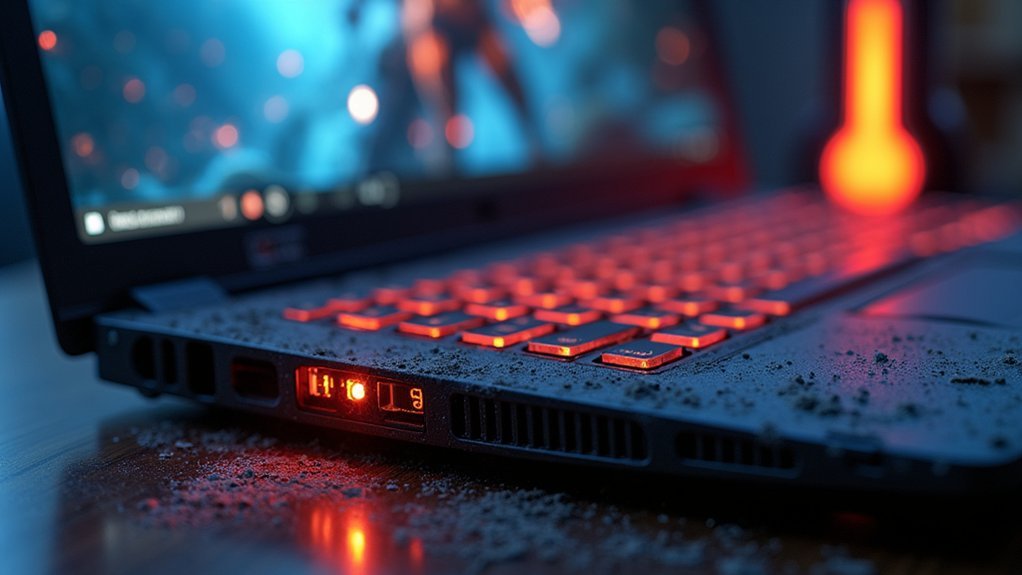
Beyond component quality issues, budget laptop manufacturers often implement fundamentally flawed thermal management designs that can’t handle gaming workloads. These inadequate cooling systems lack essential features that prevent laptop overheating during intensive use.
| Design Flaw | Impact on Gaming |
|---|---|
| Single heat pipe | Poor heat distribution from CPU and GPU |
| Restricted airflow pathways | Hot air trapped inside chassis |
| Undersized cooling fans | Insufficient air circulation under load |
| Compact design limitations | No space for effective thermal management |
You’ll notice budget laptops prioritize portability over thermal performance. Their compact design severely restricts airflow, while cost-cutting measures eliminate multiple heat pipes and advanced cooling solutions. During gaming sessions, this inadequate thermal management causes your system to throttle performance or shut down completely, making these laptops unsuitable for sustained gaming heat loads.
Single Fan Configurations Vs Multi-Fan Solutions
Most budget laptops rely on single fan configurations that simply can’t handle the heat generated during gaming sessions.
You’ll notice these cheap laptops struggle with overheating because their limited airflow can’t effectively cool both your CPU and GPU simultaneously. This leads to thermal throttling, where your components automatically reduce performance to prevent damage.
Here’s what happens with different cooling systems:
- Single fan configurations create bottlenecks in airflow distribution, causing hotspots that trigger performance drops.
- Multi-fan solutions provide dedicated cooling zones for your CPU and GPU, maintaining ideal temperatures.
- Enhanced airflow from multiple fans prevents sudden shutdowns and maintains consistent gaming performance.
You’ll experience smoother gameplay and better long-term reliability when your laptops feature multi-fan cooling systems rather than inadequate single fan designs.
How Integrated Graphics Contribute to CPU Overload
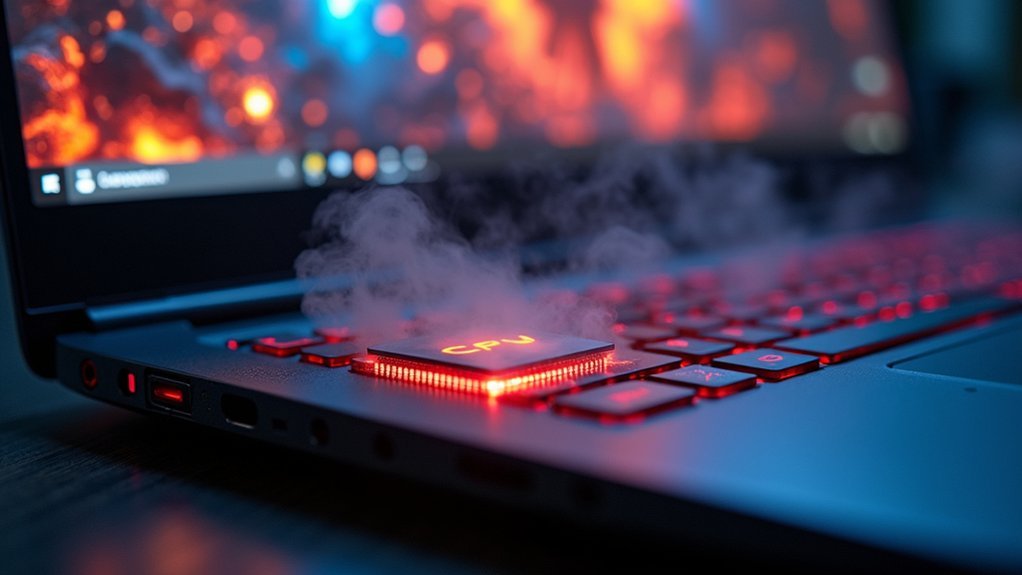
When your cheap laptop uses integrated graphics, you’re forcing your CPU to handle both processing tasks and graphics rendering simultaneously. This dual workload creates significant CPU overload, especially during resource-intensive applications like gaming.
Unlike dedicated GPUs that have their own cooling systems, integrated graphics generate additional heat directly within your CPU package, pushing temperatures beyond the ideal range.
Budget laptops typically lack robust cooling solutions to manage this increased heat generation. When your CPU reaches critical temperatures, thermal throttling kicks in automatically, reducing clock speeds to prevent damage.
This protective measure causes immediate performance degradation, making games stutter and lag. The shared system resources mean your CPU can’t efficiently distribute workload, creating a cycle where high temperatures consistently limit your laptop’s gaming performance.
Frequently Asked Questions
Why Does My Laptop Get so Hot When I Play Games?
Your laptop gets hot during games because the CPU and GPU work harder, generating more heat than your cooling system can handle. Poor airflow, cheap thermal paste, and dust buildup make overheating worse.
How to Cool Down a Laptop While Playing Games?
Use a cooling pad, place your laptop on hard surfaces, clean vents with compressed air, lower graphics settings, and monitor temperatures. You’ll reduce heat buildup and prevent overheating during gaming sessions.
Is 70 Degrees Too Hot for a Gaming Laptop?
No, 70 degrees isn’t too hot for your gaming laptop. You’re operating within the safe range. Most gaming laptops handle temperatures up to 85 degrees effectively, so you don’t need to worry about performance issues.
Is 90 Degrees Normal for a Gaming Laptop?
No, 90 degrees isn’t normal for gaming laptops. You’re pushing dangerous limits that’ll cause thermal throttling and potential damage. You should implement better cooling solutions and monitor temperatures to keep them below 85 degrees.
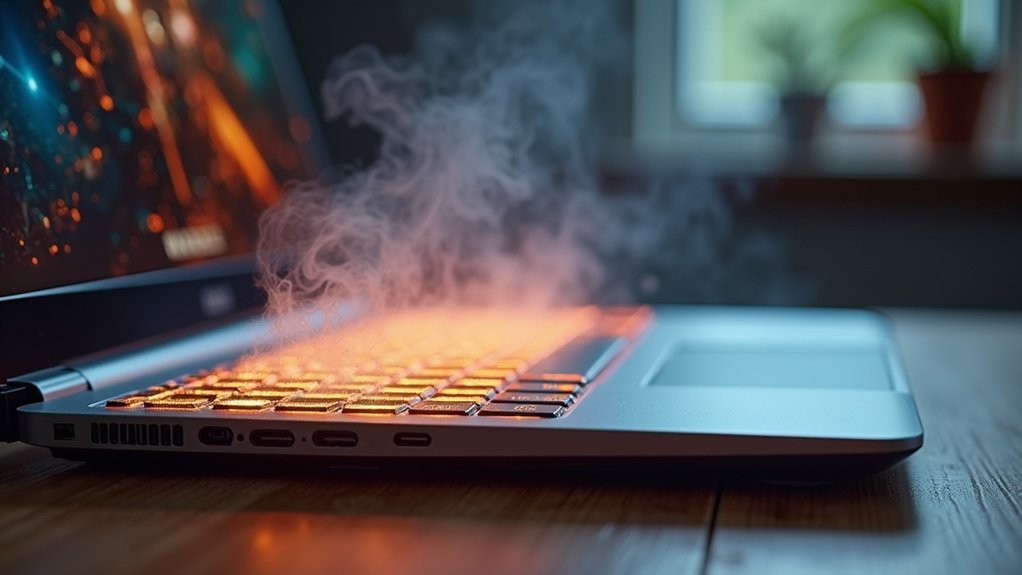
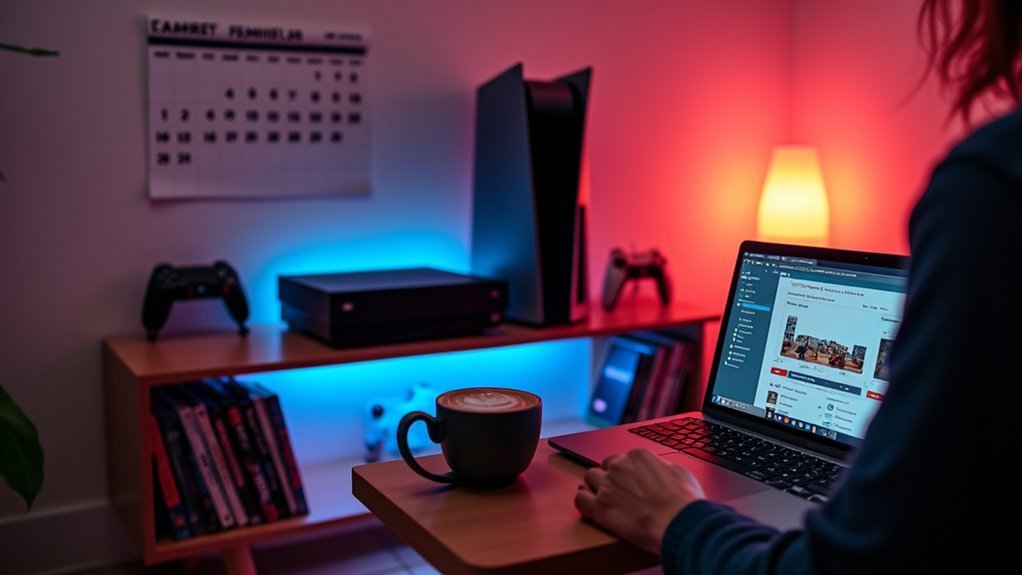


Leave a Reply